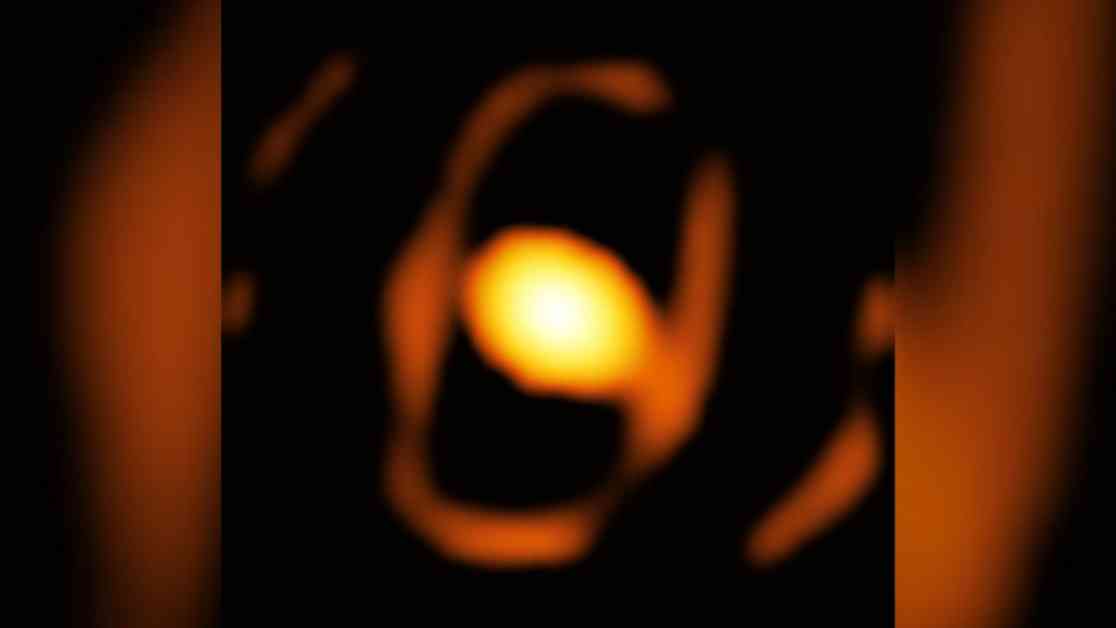Astronomers have captured a high-quality close-up image of a red supergiant star called WOH G64, also known as the “behemoth star,” located in the Large Magellanic Cloud outside of the Milky Way. This star is 1,500 times wider than the sun and is around 5 million years old, nearing the end of its life span. The recent image, taken by the European Southern Observatory’s Very Large Telescope Interferometer in Chile, shows signs that the star may soon explode in a violent supernova.
The unique egg-shaped cocoon surrounding the star has intrigued researchers, as it may indicate the drastic ejection of material before a supernova explosion. This discovery is significant because WOH G64 is one of the largest known stars in the universe, and any sudden changes could push it closer to its explosive end.
The image was captured using the GRAVITY instrument at the Very Large Telescope Interferometer, allowing astronomers to see detailed features of the star despite its distance from Earth. The cocoon surrounding WOH G64 has changed in shape over the past decade, dimming the star significantly. Scientists were surprised by the elongated shape of the cocoon, which was different from their initial predictions.
Two possible explanations for the unusual shape include the way material was shed off the star or the presence of a smaller, unidentified star orbiting WOH G64. However, there is currently no evidence to support the latter theory. If the star does not explode soon, it will continue to shed material into its cocoon, causing it to dim further in the coming years.
The recent image offers a rare opportunity to observe the life of a star in real-time, providing valuable insights into the final stages of a supergiant star like WOH G64. Astronomers are excited about the potential for further discoveries as they continue to study this behemoth star in the sky.










